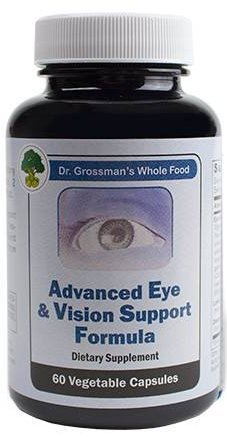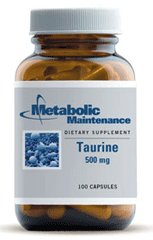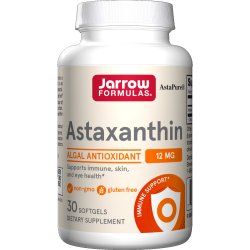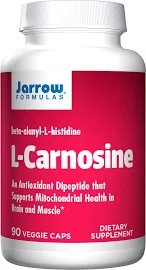Hereditary Damage to the Optic Nerve
Genetic damage
Mitochondrial function & structure
Genetic damage symptoms
Nutrients
More tips
Damage overview
IOP Damage
Types of Hereditary Damage
The optic nerve is subject to not only physical or pressure-induced damage, but to damage which arises from hereditary factors. The most common condition is Leber's which results in painless loss of vision, usually beginning at a relatively young age. Other vision conditions that result from hereditary damage include retinitis pigmentosa, mitochondrial encephalopathy, myoclonic epilepsy, Kearns-Sayre syndrome, lactic acidosis stroke, and ragged red fiber myopathy2, and dry eye conditions such as Sjogren's syndrome1.
Vitamins
& Supplements
Not sure which to get?For help call us at 845.475.4158
Complete Product List
On a tight budget?
We recommend
Advanced Eye & Vision Support Formula (whole food) 60 vcaps
Essential Viteyes Optic Nerve Support Formula - 90 tablets Viteyes Optic Nerve Support Formula - 90 tabletsSupports healthy optic nerve function |
Essential Advanced Eye & Vision Support Formula (whole food) 60 vcaps Advanced Eye & Vision Support Formula (whole food) 60 vcapsWhole food, wild crafted herbal vegetarian formula with vision antioxidants, chemical- and preservative-free. |
Essential Taurine 500 mg 100 caps Taurine 500 mg 100 capsSupports regeneration and elimination of worn out tissue |
Essential ACG Glutathione EXTRA STRENGTH Spray 2oz. ACG Glutathione EXTRA STRENGTH Spray 2oz. Glutathione Spray antioxidant for eye and overall health. Vegan and GMO Free. |
Essential Astaxanthin 12 mg 30 Gels Astaxanthin 12 mg 30 GelsEye strain relief, retinal support, brain functioning and immune support. |
Essential L-Carnosine 500 mg 90 caps L-Carnosine 500 mg 90 capsSupport for lens health & clarity. |
| Very Important CoQ10 100 mg 60 gels |
| Important Krill Oil, 1000mg 60 softgels Helpful Microcurrent Stimulation 100ile Purchase Option |
Mitochondrial Function
Mitochondria structures, located in every cell in the body, described by wikipedia as the "power plants" of the cell, convert nutrients into energy for the use of the cell and each part of the body. Mitochondria generate the cellular supply of adenosine triphosphate (ATP)1 the source of energy within the cell. The optic nerve is especially dependent upon the healthy functioning of mitochondria since vision is largely an energy interpretation process.
Mitochondria control cellar division (ie, initial development and repair of damaged tissue, and their disfunction signals cell death with severe consequences. They control oxidation within the cell; they convert amino acids, essential fatty acids and steroids to ATP, food for the cell, and they control functions to provide oxygen to the eye (the 'respiratory chain').
Mitochondrial Structure
Mitochondria contain their own DNA-like components used to synthesize RNA and thus are vulnerable to hereditary damage. Their structure includes an outer membrane space, an inner membrane space, an intermediary membrane and the lamella which contains the matrix.2, 3 The matrix is the part of the mitochondria containing DNA (which carries the genetic code) and ribosomes (which connect amino acids together as specified by RNA.)4 When mutations are carried in the DNA, genetically, then the various mitochondrial disorders such as Leber's result.
Symptoms of Mitochndrial Damage
According to mitoaction.org, mitochondrial damage can result in:
- progressive or permanent eye disease
- temporary fatigue, seizures, migraine, stroke-like symptoms, often triggered by specific health conditions, toxin exposure, etc.
- muscle weakness, either permanent or temporary
More Self Help
- Certain nutrients such as lutein, zeaxanthin, vinpocetine, l-lysine, a number of vitamins & enzymes, and fish oil may help Leber's.
- See recommended nutrients
- Some research indicates that daily use of Microcurrent Stimulation may help preserve vision as well.
- See all optic nerve support vitamins and supplements
Studies
References
1. Campbell, Neil A.; et al., Book: Biology: Exploring Life. Published by Pearson Prentice Hall, 2006
2. Mitochondrial Disorders with Significant Ophthalmic Manifestations, Mona Al-Enezi, MD, et al,
Middle East African Journal of Ophthalmololy. Apr-Jun, 2008, pp.81-86.
3. Wikipedia: mitochondria matrix
4. Wikipedia: Ribosomes, DNA
Genetic damage
Mitochondrial function & structure
Genetic damage symptoms
Nutrients
More tips
Damage overview
IOP Damage
 info@naturaleyecare.com
info@naturaleyecare.com



 Home
Home



 Vision
Vision Vision
Vision



 Health
Health Health
Health Research/Services
Research/Services Pets
Pets About/Contact
About/Contact


